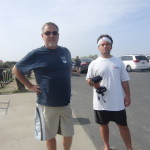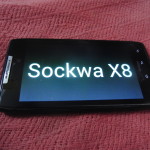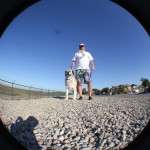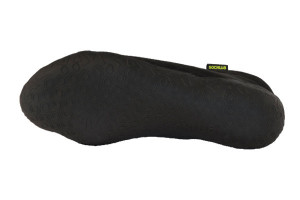
Sockwa X8 bottom view
Summary
Sockwa is the ironic sponsor of the 2014 May 4 Sunday, International Barefoot Running Day in Sunset Beach California (IBRD, Sunset Beach CA)
Why Running in Shoes Doesn’t Work for Most People
- Most people quit running early in their lives
- Many people quit running as a result of chronic pain or injury caused by running
- Most people, while running in shoes on hard surfaces, will land with excess impact on hard surfaces
- Most people while running on soft terrain, which they believe absorbs the impact of running, will land with greater impact
- It is certain that chronic pains and injuries, resulting from running, are caused by EXCESS stresses and strains caused by inefficiencies (skidding, scuffing, grinding, etc.) as the foot interacts with the ground (technique)
- If it is comfortable to run with sloppy technique, most people will run with sloppy technique
- Many people find running boring, and ultimately quit running
- The soles of our feet are among the most sensitive areas of the human body
- Footwear is designed to reduce stimulation to the soles of our feet
- Running barefoot is vastly, far, extremely, nearly infinitely more stimulating than running with the soles protected
- Human feet have about a quarter of a million sweat glands to keep them cool
- Most shoes prevent sweat from evaporating, which leads to uncomfortably hot and stinking feet
Why Barefoot Running Works (when actually barefoot)
- When excess stresses and strains are immediately obvious and uncomfortable while running, most people will soon figure out how to run with less impact
- Many people immediately reduce impact by 50%, simply by removing their shoes while running on a hard surface (we respond to pain, by moderating the strike force)
- Experienced barefoot runners, those who run on a variety of terrains while barefoot, tend to land with NO impact transient spike
- Novice barefooters – especially those who only go barefoot on comfortable terrain, or wear “barefoot shoes” to protect their soles from discomfort on rough terrain – tend to tense up the foot, and run with stiff legs, which, instead of reducing impact related injuries, transfer the excess stresses from the knees, hips, and back to the calf, Achilles tendon, and foot – often resulting in calf and Achilles pain
- After working through the calf pain, many suffer top of foot pain, or stress fractures
Story
Sockwa asked me to evaluate their new X8 product – despite warnings about my previous footwear evaluation of the Nike Free 5.0 “Barefoot Shoes” 2005 February 5.
Pros of the X8
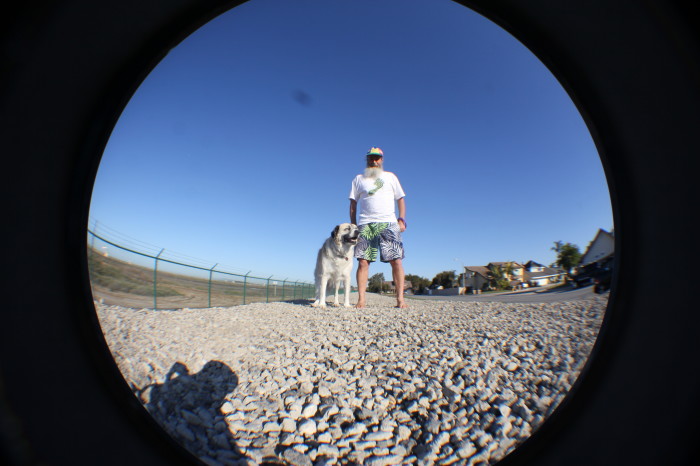
If I ever wanted to run dozens of miles on railroad gravel, I might wear Sockwas… but then why would I want to run on this, when there’s a nice smooth street and sidewalk right next to it?
Basically, these are more sock-like than most running footwear.
- Reasonably comfortable
- Lightweight
- Thin soles
- Less expensive than most racing flats
- Warmer than bare feet – if I lived where the temperature went below 50 degrees very often, I might almost like these.
Cons of the X8
All footwear, except decorative jewelry, has one inherent problem – their purpose is to protect our feet from discomfort or abrasion and cuts on rough terrain. Discomfort while running on rough terrain, helps us learn to run with more gentle running technique. Cuts and abrasions don’t just happen, they happen when we slam our foot into, or slide our foot across sharp objects, or don’t watch out for obvious hazards (the same kind of hazards most people in shoes are sensible enough to avoid too. Most sharp objects don’t cut conditioned feet when landing gently.
- Warmer than bare feet – uncomfortably warm above 60 degrees
- Tend to provide extra courage to use careless or sloppy technique – which leads to a sharp knee pain on technical terrain
- ” JUST ENOUGH PROTECTION WHILE STILL FEELING COMPLETELY BAREFOOT.” – Protection often results in sloppy technique, and they do NOT feel completely barefoot.
- Not comfortable for very long for the thin skin on the tops of my feet
Videos
Video coming soon … or later
The Marketing
From the Sockwa website:
“UNIQUE OUTSOLE PROVIDES JUST ENOUGH PROTECTION WHILE STILL FEELING COMPLETELY BAREFOOT.”
Sockwas X8s do NOT feel “completely barefoot”. The only footwear that does feel completely barefoot, is NO footwear. This only seems to be obvious to people who actually go barefoot on most terrains, and who are not trying to sell “barefoot shoes”. In fact, if they did feel exactly like being barefoot, why would we want or need them?
“The lining of the X8 is made of a moisture wicking fabric which also anti-odor properties for the hottest summer days”.
Don’t get me started on the problems of wicking!!! Dang it, too late.
Despite not reading the marketing hype beforehand, I noticed immediately when I removed the Sockwa X8 while running in about 65-70F weather, that my feet were much more comfortably cool while barefoot, than while wearing the X8s. This of course is another inherent problem with enclosed shoes (don’t get me wrong, I’m not a fan of thse sandal-type running shoes either). But the original problem, the reason our feet are blessed with a quarter-million sweat glands, is to help keep the feet cool while running. Sweat, when evaporating directly from bare skin, removes excess heat from the bare skin.
Inside shoes, perspiration can’t evaporate naturally and accumulates resulting in a damp environment. This damp environment becomes hot – since the cooling system is impaired by enclosed footwear, which results in stinking feet.
Wicking solves only the problem of getting rid of the excess moisture, but ignores the original problem – hot feet.
When moisture is wicked away from the skin (instead of being allowed to evaporate), our feet become overheated. When our feet are overheating, they sweat more. Wicking is one of the biggest marketing deceptions of our time, fabrics that wick away our natural perspiration to make us feel more comfortably dry, can lead to overheating and dehydration – where did you think that moisture was coming from?
Would Barefoot Ken Bob wear Sockwa X8s for Running
IF I needed to run in cold weather. However, there’s a reason I moved away from Northern Lower Michigan to the coast of Southern California;
I don’t care much for cold weather!
I don’t care for wearing lots of clothing just to not be freezing.
There are people who enjoy that, and even a few who adapt their bodies to enjoy freezing weather without excess clothing.
I’m not one of those people. I shouldn’t tell you this, but there’s a reason a lot of people live in Southern California, and an even better reason that coastal property here is very expensive. The weather here is nearly perfect all year around – now please don’t move here, like I said, plenty of people already live here. And those who stay understand that the living around other people is worth not needing either heating or air-conditioning in our homes.
I would not recommend any footwear or clothing that wicks moisture away from the skin while running in hot weather! The moisture is there to cool us off. Once wicked away from the skin, we continue to overheat, and the bodies response? More sweat! This can quickly lead to dangerous dehydration, resulting in over-hydrating if you drink enough to compensate for the loss of moisture.
And the feet alone have a quarter million sweat glands! So wearing footwear made from moisture-wicking fabric may be even worse! Remember, sweat is a natural response to heat. The evaporation of sweat from the surface of our skin cools us off. The wicking of moisture away from the surface of our skin defeats the purpose of our natural cooling system.
I might wear the Sockwa X8s if I needed or wanted to run dozens of miles over some of the roughest gravel. But, I haven’t done that since 1998. There simply isn’t that much rough gravel around. There aren’t many races with rough gravel courses, and the trails where I do see rough gravel, or the roads that have eroded to a really rough surface, there’s usually an alternate path that has been worn down by other animals (including people with shoes), because gravel isn’t a great surface to run even in shoes.
Besides, I recommend all beginning barefoot runners… No; all runners who want to improve their running technique, to run at least occasionally on rough terrain like gravel while barefoot (not in barefoot or minimalist footwear), because when the bare sole lands on a rough pokey surface, it is obvious except to the most senseless runners, exactly how their foot is interacting with the terrain. And while running technique isn’t all about foot-landing, everything else about our running technique, from posture, to cadence, to how much we bend our knees and relax, changes the way the foot interacts with the terrain – and that is why barefoot running on a rough surface can teach us to run more gently. And as our technique improves, the source of the discomfort fades away.
Related Links
- Sockwa X8
- Overheating Because of Moisture-Wicking Fabric: Could This Have Caused the Bighorn Catastrophe?
- International Barefoot Running Day (IBRD) at The Barefoot Runners Society
- IBRD Sunset Beach California
- Ken Bob’s Regular Runs and Play-Fun-Shops
Gallery
- Sockwa X8 side view
- Sockwa X8 bottom view
- Camera crew, Bernard and Adrian
- International Barefoot Running Day T-Shirt back
- International Barefoot Running Day T-Shirt front
- Sockwa X8 Evaluation by Barefoot Ken Bob
- Ken Bob barefooot on “railroad” gravel … but why run on this unstable stuff when there’s a nice smooth street and sidewalk right next to it?
- Ken Bob wearing Sockwa X8s on “railroad” gravel … but why run on this unstable stuff when there’s a nice smooth street and sidewalk right next to it?



